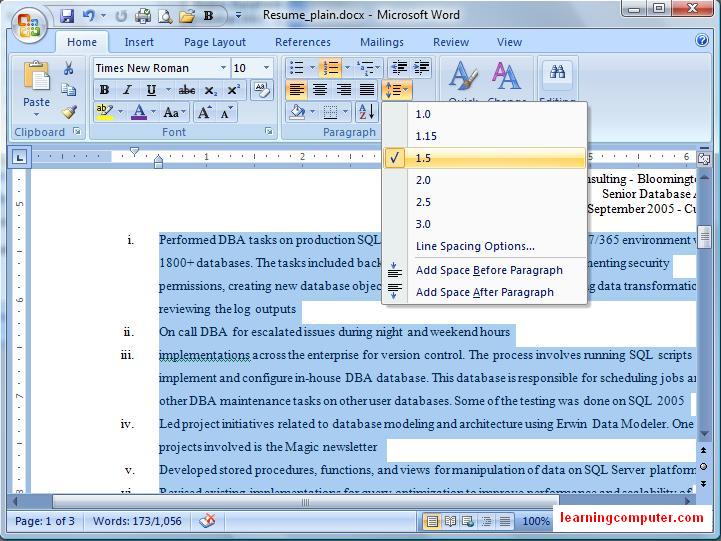

Because characters are part of paragraphs (remember those Russian nesting dolls), every paragraph includes a basic font description. You don’t have to select a paragraph to format it just click to place the insertion point within a paragraph. You can set formatting for text alignment, indents, line spacing, line breaks, and paragraph breaks. Use the Paragraph dialog box (Alt+H, PG) to format paragraphs. Word uses the term font, probably because it’s shorter and therefore easier to fit into a dialog box. The term font was more specific, referring to variations within a typeface such as bold, narrow, or italic. Prior to the use of computers, groups of letters, numbers, and punctuation of a certain style, such as Helvetica or Bodoni, were called typefaces.
How to decrease spacing between lines in word 2007 how to#
Finally, you find out how to copy and reuse formatting with tools like the Format Painter and style sets. You learn how to format paragraphs with indents and spacing, and how to control the way Word breaks up the words in a line and the lines in a paragraph. This chapter starts with the basics: how to format individual characters and words-selecting fonts and making characters bold, italicized, underlined, or capitalized. Quotes and references should be set off from the other text. Important words need to resonate with emphasis. Headings should be big and bold, and they should also be consistent throughout your document. Body text needs to be readable and easy on the eyes.

You can apply formatting to just about every element of your document, from a single character to entire paragraphs. Good formatting distinguishes different parts of your text and helps your readers take in your message. Chapter 4. Formatting Text, Paragraphs, and Headingsįormatting is the fine art of making your documents effective and attractive.


 0 kommentar(er)
0 kommentar(er)
